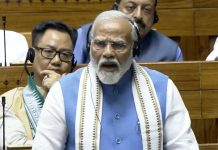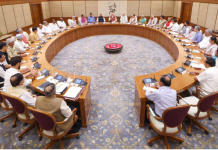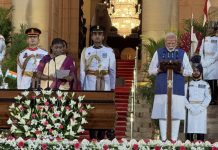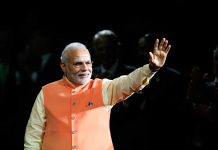Bhaskar Parichha
Smarting up Indian cities is a welcome step. But as Author of Paradise Planned: The Garden Suburb and the Modern City Robert A.M. Stern observed, ‘Suburbs are like cholesterol — there’s good and there’s bad, all to be sensibly calibrated.’
According to the union government’s Economic Survey -II, only one-fifth of the smart city projects are likely to be completed by 2018 end and that too in the best possible scenario.
In December 2015, Prime Minister Narendra Modi officially announced that India will have 100 new smart cities. These cities were one of the main promises made by Modi in the run-up to the 2014 general elections. The smart cities are Modi’s way of taking care of the growing needs of urbanization and also help bridge the rural-urban divide.
 The Modi government has prepared a blueprint to define the key elements of the 100 smart cities. Rupees One thousand crores have been allocated for each city which has been selected according to its population.
The Modi government has prepared a blueprint to define the key elements of the 100 smart cities. Rupees One thousand crores have been allocated for each city which has been selected according to its population.
What is a smart city, especially in an Indian context? Experts suggest a smart city should involve building a new, well planned and world class digital city which can provide high quality infrastructure and standard of living to its citizens.
So far so good.But, most Indian cities are today in a dreadful condition with horrible traffic, inhuman living conditions and unsafe train ride. Smart cities should not be ‘old wine in new bottle’ or what Joseph Chamberlan said, ‘you cannot teach old dogs new tricks.’
In terms of infrastructure, the smart cities should have round-the-clock accessibility of quality services like water and power. It should have a robust public transport system. In social infrastructure, the cities should provide opportunities for jobs and livelihoods for its inhabitants.
They should also have apposite facilities for entertainment and the safety and security. State-of-the-art health and education facilities are also needed. The cities should minimize waste by increasing energy efficiency and reducing water conservation. Suitable recycling of waste materials must be ensured. Do existing Indian cities have these basics?
Indisputably, the development of new cities has the potential to move the economy at a faster pace just as the ‘Golden Quadrilateral’ road project of the previous BJP government. If brand new, smart cities are developed, it would provide impetus to a variety of companies including cement, construction, power and InfoTech.
Smart cities can be developed over a minimum area of 500 acres and will require at least Rs 6,000 crore of investment for basic and back-end infrastructure. Experts say it can generate employment for at least 200,000 people per city.
Forget hundreds. Ten such new cities can bring in about Rs 9 lakh crore investments and usher in unprecedented economic growth. The smart cities will result in new orders for city planning, engineering, designing, and construction companies.
All over the world, industrialization and knowledge-dominated service economies are reinforcing the role of urban centers. Many cities have grown exponentially over the last few decades. Even smaller ones are also expanding.
Mobility in the early 21st century is not only changing they are also shrinking. Smart technology and new behaviors are emerging. One such tool is Integrated Mobility Plans (IMPs) that can be used to address this challenge.
Public transport is the backbone of the sustainable urban mobility and must be complemented and supported by efforts in other local policy areas. Other key sectors, such as environment, energy, social services and health care are also important parts of development.
Drawing up the plan will bring stakeholders from all sectors together around the same table. This would mean consulting citizens and stakeholders. But the main challenge lies in how these plans can be effectively implemented. Political commitment is the key to realize the vision of a smart city.
A successful smart city strategy requires a strong vision, effective governance, long-term political commitment, new funding arrangements and most importantly ‘connectivity’ and ‘collaboration’.
It’s a city which uses technology to run itself and manage resources efficiently. Everything from a smart city’s governance to its public transport network, water distribution and waste-disposal systems would use technology to provide better services to residents.
Achieving the goal of developing 100 smart cities in India will require a lot more than the right technologies; say experts. Right now, Indian cities lack in basic governance and physical infrastructure. So, even if sensors were placed to detect leakages in water pipes, civic authorities are not geared up to fix those kinds of problems efficiently.
Some Indian states are already experimenting with creating new cities with “smart” elements. These include the Gujarat International Finance Tec-City, or Smart City Kochi, in Kerala. Japan has pledged to help turn Varanasi into a smart city, while American companies will help improve facilities in the Indian cities of Aurangabad, Ajmer and Visakhapatnam.
Smarting up Indian cities is a welcome step. But as Author of Paradise Planned: The Garden Suburb and the Modern City Robert A.M. Stern observed, ‘Suburbs are like cholesterol — there’s good and there’s bad, all to be sensibly calibrated.’
(The writer is a senior journalist and currently associated with OdishaLIVE as Consulting Editor. You can share your comment with him at content(@)odisha(dot)live)


















